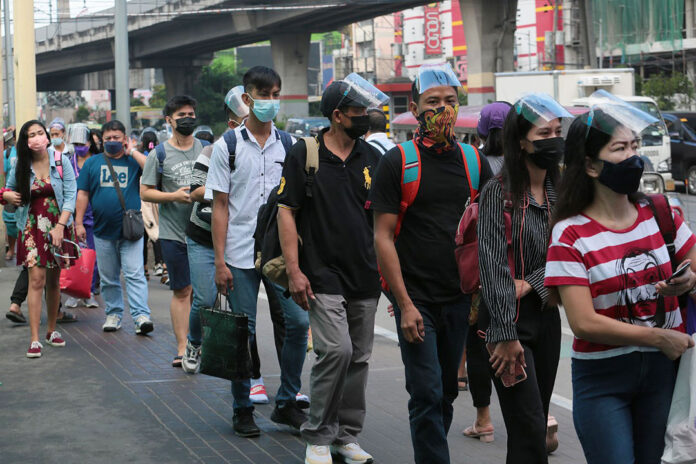A CORONAVIRUS surge fueled by the Delta variant in the Philippine capital region and nearby cities has already been reversed, a group of public health researchers said on Thursday.
“We have reversed the Delta surge already in the NCR (National Capital Region),” OCTA Research fellow Fredegusto P. David told a virtual forum Thursday streamed on Facebook.
Metro Manila is now back to where it was before it struggled to contain a spike in infections spurred by the highly contagious Delta variant, which has been closely watched by health experts worldwide, Mr. David added.
He said the decline in infections in the capital region was first observed in mid-September.
Metro Manila’s number of cases remains on a downward trend as its seven-day average dropped to 630 cases daily, the OCTA fellow said.
The region’s virus reproduction rate was at 0.43, lower than the critical cut-off of 1.4, while its average daily attack rate remains moderate at 4.45 per 100,000 people, he said.
The positivity rate in Metro Manila decreased to 4%, which meets the World Health Organization’s standards.
CASE COUNT
Philippine health authorities reported 1,766 coronavirus disease 2019 (COVID-19) cases on Thursday, bringing the total to nearly 2.8 million.
The death toll rose to 43,825 after 239 more patients died, while recoveries increased by 2,591 to 2.7 million, it said.
The Department of Health (DoH) said there were 37,159 active cases, 68.9% of which were mild, 5.3% were asymptomatic, 8.2% were severe, 14.11% were moderate and 3.5% were critical.
It said 22 duplicates were removed from the tally, 17 of which were recoveries, while 214 recoveries were reclassified as deaths. Two laboratories failed to submit data on Nov. 2.
The DoH said the intensive care unit occupancy rate in the Philippines and Metro Manila was at 43% and 37%, respectively.
Mr. David said several urban areas outside the metropolis — such as Davao City, Bulacan, Batangas, Cavite, Laguna, Pampanga, and Rizal — are now also classified as low risk from the coronavirus.
Cebu City in central Philippines is now considered as “very low risk,” he said.
“There are some areas in the country which still have a significant number of cases but most of them are already on a downward trend,” Mr. David said.
“I could count maybe five municipalities with significant risk,” he added. “It’s like we reversed back to March of this year.”
COVOVAX
Meanwhile, the local distributor of CovovaxTM developed by US biotechnology firm Novavax is optimistic of getting emergency use approval in the Philippines soon after the COVID-19 vaccine recently received authorization in Indonesia.
“We welcome this development and look forward to the start of the global rollout of CovovaxTM,” Vinay Panemanglor, founding member and chairman of the board of directors of distributor Faberco Life Sciences, Inc. (Faberco), said in a statement on Thursday
“CovovaxTM has high efficacy and safety levels, and we are anticipating approval of our EUA (emergency use authorization) from the Philippine Food and Drugs Administration shortly following the Indonesian EUA. We have completed all submissions and are ready to start shipment as soon as we get the approval,” he said.
Novavax, Inc. announced on Oct. 31 that it has also filed applications for use in other countries and for listing with the World Health Organization.– Kyle Aristophere T. Atienza

